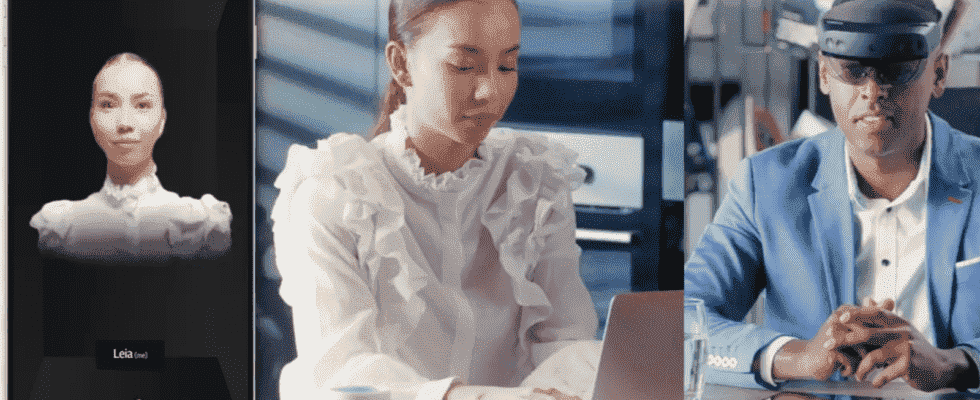The first European holographic communication platform will be tested, under the impetus of a consortium of telecom operators, including Orange, around the deep tech Matsuko.
This is one of the most original announcements that will pique the curiosity of lovers of Star Wars and its holograms. The telecom operators Orange, Deutsche Telekom, Telefonica and Vodafone announced on Wednesday that they have joined forces with the start-up of Slovak origin Matsuko (a little French too, since it is taking up residence at Station F, in Paris, for the part concerning UX Design). Their objective is to create a European platform for immersive 3D experiences, thus mixing the virtual and the real, via holographic communication.
Film yourself with your 5G smartphone to make your 3D hologram appear elsewhere
Office holograms may be coming soon. Based on the application of holographic calls developed by Matsuko, the four major European operators claim their ambition to integrate holograms in video communications and contribute to the revolution of interactions between people.
For this, they will conduct a pilot project that will allow customers to start a holographic communication session. This will be done through the interconnection of operators’ edge computing servers. They are preparing to develop, through their collaboration, a platform halfway between the real and virtual worlds.
From the user’s point of view, what is the interest of such a project? The idea, for partner companies, is to allow anyone with a 5G smartphone to film themselves with the latter’s front camera. This will allow him to appear to his interlocutors in the form of a high definition 3D hologram, by a process of 3D reconstruction executed in edge computing servers.
A hologram visible using a VR headset or AR glasses
5G capabilities will help overcome potential hurdles in creating realistic 3D images. From a technical point of view this time, the front camera of the smartphone will capture the holographic image in three dimensions and in real time. This will then be broadcast and processed by a 3D rendering algorithm whose secrets we would obviously dream of knowing.
The hologram will be projected in a virtual environment or superimposed on the real environment, all thanks to a virtual reality headset or augmented reality glasses.
Today, Matsuko and the operators are at the point where they are examining the possibilities offered by 5G mobility to organize presentations, meetings or virtual events. The partners thus imagine, in the long term, interactions face to face or in small groups, within a company for example. All of this is made possible, let’s not forget, by technological development. One thinks in particular of the reduction in latency and the evolution of mobile edge computing technologies.
A few years ago, network issues made this holographic experience impossible. Today, the results are more than encouraging, and the impossible becomes possible.

0